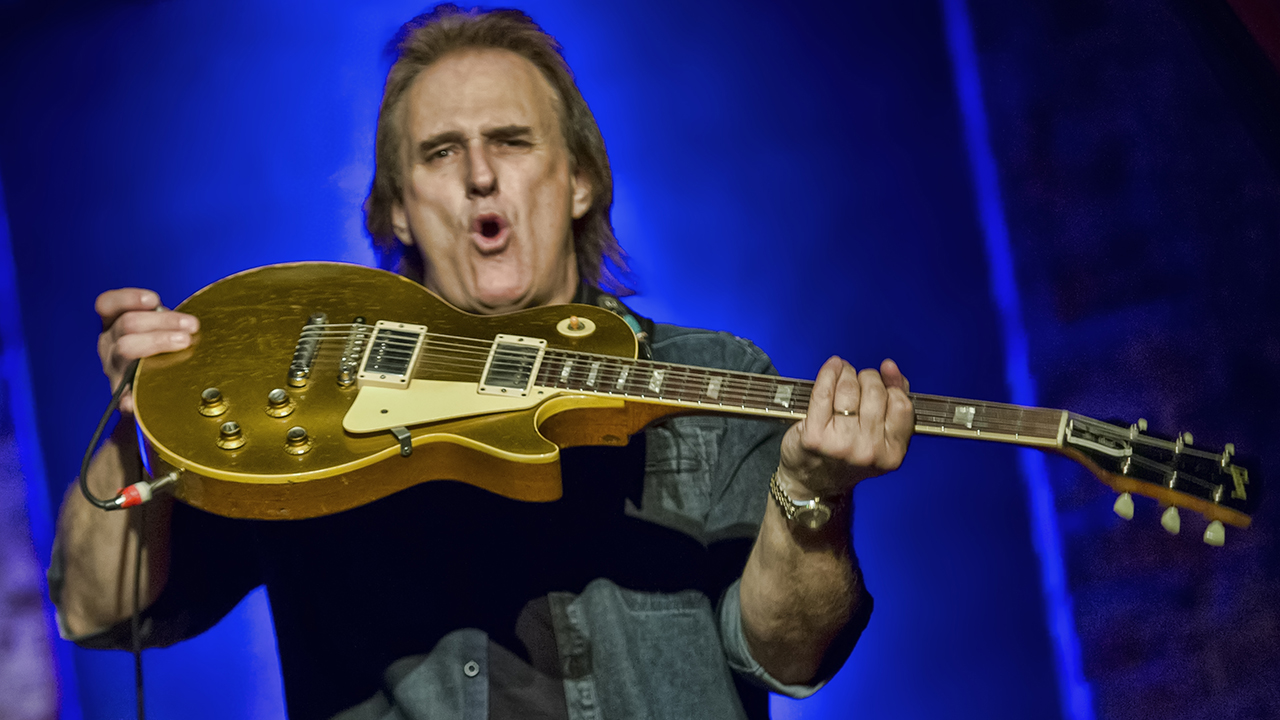
Over the last 50-odd years, a hell of a lot of great guitarists have come out of Texas. Stevie Ray and Jimmie Vaughan, Eric Johnson, Johnny Winter and Billy Gibbons come to mind – but ever-rocking blues bruiser Rocky Athas should never be far from top of the list.
Having connections with SVR, Brian May, Glenn Hughes and John Mayall, Athas has seen it all since breaking ground in the ‘70s. He’s also been a member of Black Oak Arkansas, covered Hendrix and Cream, and dropped nine records under his own name.
What he’s learned is that it all comes down to one thing: “Tone – the elusive Ark of the Covenant,” he laughs. “Finding your tone is difficult to explain because tone is subjective. What sounds good to me might sound offensive to you and your ears.
“I know what pleases me when I hear it. I want the good round, rich, deep tone of a world-class operatic tenor like Pavarotti. It has to sound great in every register and be effortless. My job as a lead guitarist is to sing my leads with great phrasing and make a statement.”
With his new record Livin’ My Best Life, Athas has that dialed in. “Every album is like a time capsule of who I am,” he says. “I’m always trying to learn something new, so my new album is the best representation of me. Not because it’s new, but because it backs up what I believe about playing leads that sing and say something memorable.
“Taking my time to find the right paint brushes to work with to fit a song’s mood and message is important to me. How boring would it be for every track on an album sounded the same?”
At 69, Athas is full of life and playing better than ever. “Being remembered as the guitarist with the identifiable, monstrous tone that always made an audience smile would make me happy,” he says.
“Things that sound good become timeless. Music is about making people feel something. Happiness and joy align with my belief system of why I am on this Earth.”
What inspired you to pick up the guitar?
“As a baby boomer I witnessed the Beatles’ performance on The Ed Sullivan Show, which birthed a generation of aspiring musicians. But my older brother, Nick, already played guitar and influenced everything in my life from sports to music; so the guitar was probably predestined for me.”
Can you remember your first guitar?
“It’s impossible to forget! My parents memorialized my budding musical interests with an 8x10 Sears portrait of me, my Beatles haircut and my Kingston three-pickup pawnshop special with a million buttons.
“It’s no longer in my possession, but if anyone finds it I’d love to hear from them! My first real guitar was a beautiful 1964 tobacco sunburst Gibson ES-330 that I cherished.”
Eric Johnson sat down and wowed me – I had no idea he was so awesome on piano
How were you impacted by growing up in Texas surrounded by great players?
“Texas has a deep, rich musical environment; I was lucky to be born here. The level of diversity and excellence, especially in Dallas, was so high that it raised the bar for everybody in or near it. The motivation and competition were contagious in a good way. All the musicians I hung out with were generous with their knowledge, and we all reciprocated.
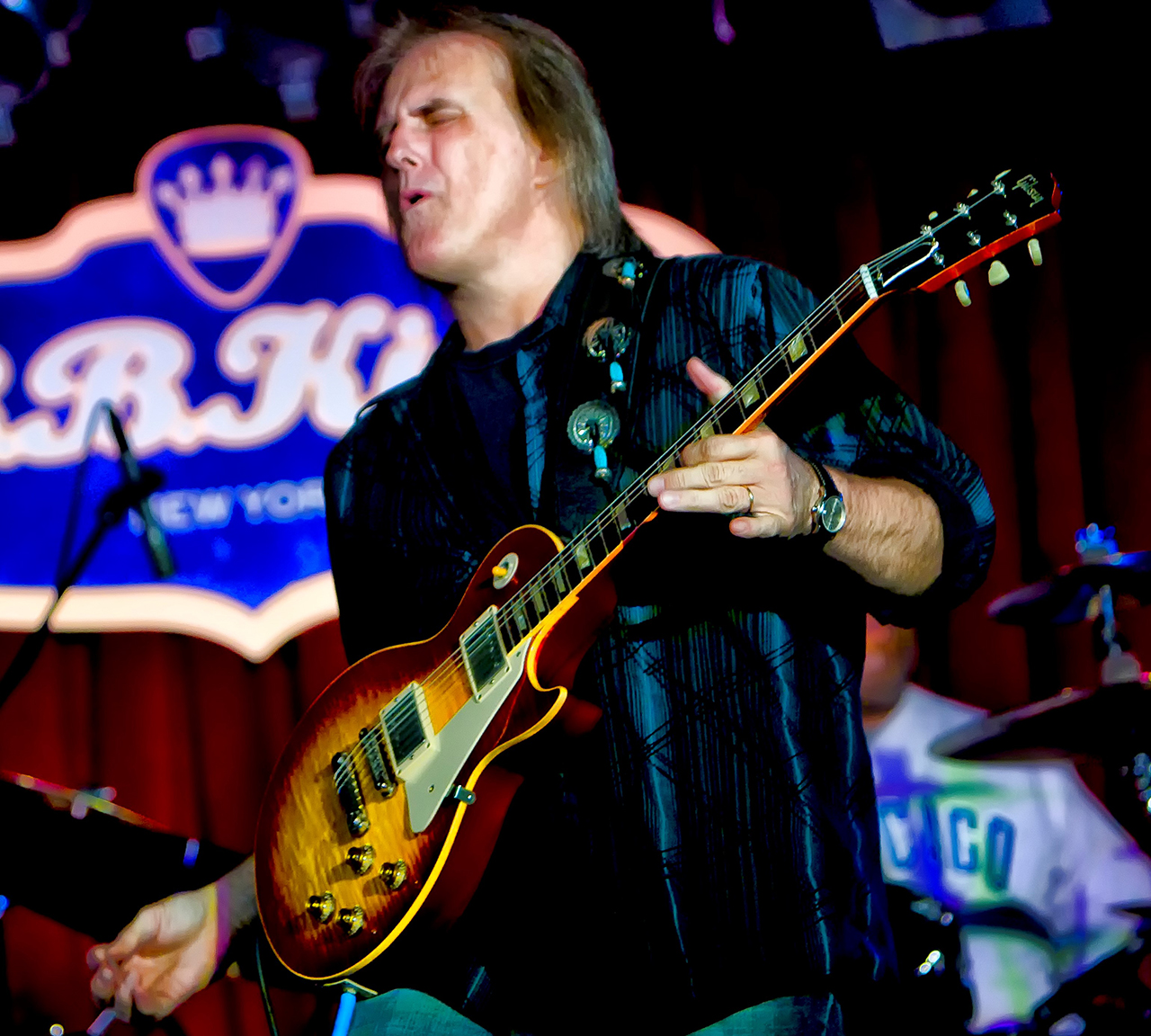
“Even though Eric Johnson was in Austin, we had the same manager for several years and we did many shows together. One day I was with him at his parents’ house, and he sat down at the piano and wowed me – I had no idea he was so awesome on piano. Eric is one very talented, multi-faceted guy.
“And, of course, Stevie Ray Vaughan and I met in elementary school and became very good childhood friends, all because of the fifth-grade talent show. I played House of the Rising Sun, Secret Agent Man and I’m Not Your Steppin’ Stone on my 330.
“Afterward Stevie walked up and said, ‘I play guitar too,’ and our friendship began. We would call each other and talk about great guitar players and what guitars they were playing, what kind of amps they used, and all that.
“In junior high we ate lunch together, and the only thing we talked about was music. Since we both had older brothers who were close in age, we were influenced by their choices. Once I was old enough to drive, I would pick Steve up in my brother's car, and we would go to jam sessions as often as we could find them. Those were great times before we chose a lane to pursue, and he followed his brother to Austin.”
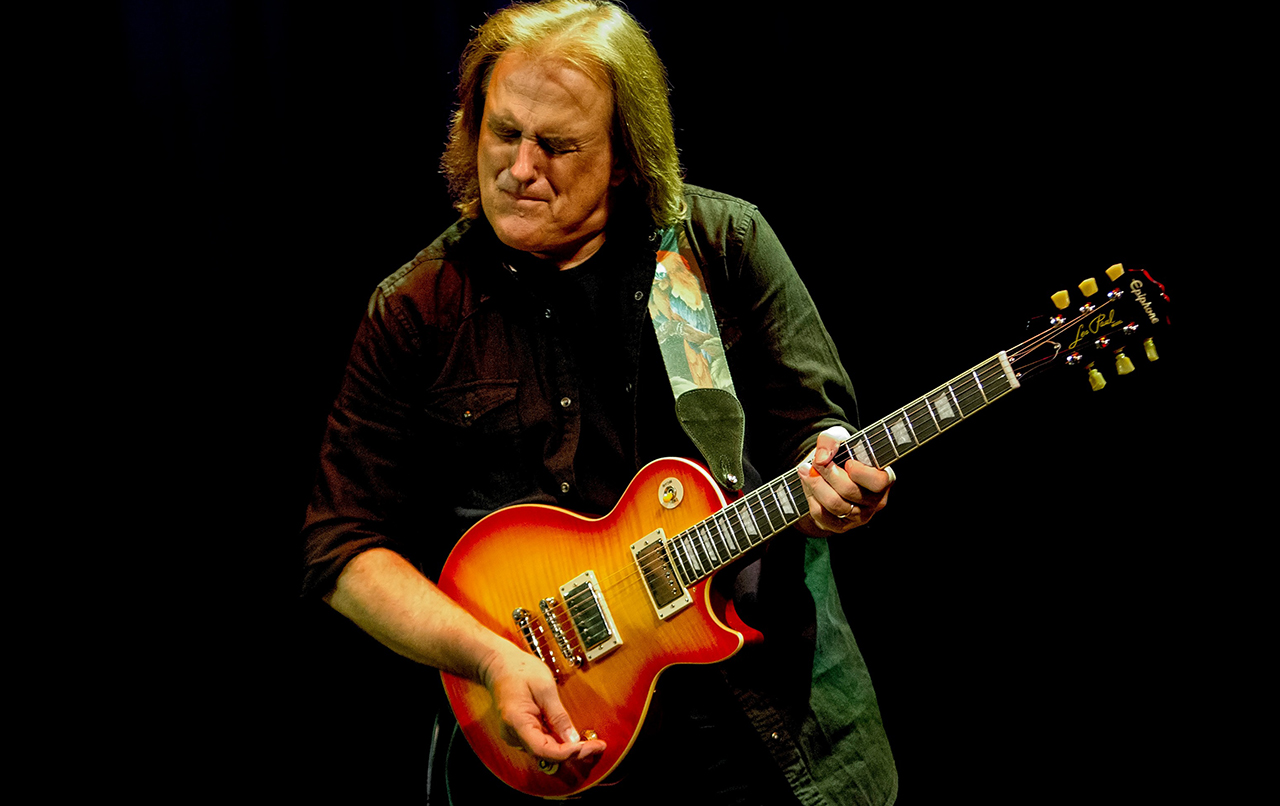
As I understand it, Brian May borrowed a few licks from you.
“When Guitar World published the interview that mentioned it last year, my phone blew up! My friends… they all knew it was me.
“Dallas was an absolute hotbed of live entertainment during this time. My original band, Lightning, had a reputation for putting on an amazing live show. Promoters had us opening for The Kinks, Ritchie Blackmore, Pat Travers, Montrose, Trapeze, Joe Walsh, Rick Derringer, Alice Cooper, America, Mountain…
Double Trouble were the real deal with a solid pocket that allowed me to breathe… Stevie Ray Vaughan was very lucky to have them
“We would pull out all the stops, including our drummer doing backflips at the end of the show. The word was out, and we were happy to show off everything in our arsenal. So, our reputation preceded us when Queen came to town in 1977 with Thin Lizzy.
“Brian came to [Dallas venue] Mother Blues with the guys from Thin Lizzy, and at the end of our show, he walked up to me and said, ‘Hey, I dig that thing you do with your right hand.’ I was finger-tapping with my right hand. Then he says, ‘I’m going to nick that from you.’ I was cocky in those days and said to him, ‘Go for it!’”
Did May ever follow up with you?
“Brian has never spoken directly to me since then, but I would love to have a chat with him now if that could be arranged. I’d love to hear how he remembers that night. As a producer now, I have an entirely new appreciation for his skills as an arranger. He’s done brilliant work.”
Tell us about the rig you used with Black Oak Arkansas and Glenn Hughes.
“In Black Oak Arkansas I was all about the tone and decibels for live shows. I used my Lab-L5 and my Fender Twins. When I was with Glenn, I used Marshall Amps on most of those shows because that’s what the promoters provided.”
You later recorded with Stevie Ray Vaughan’s backing band, Double Trouble. What was that experience like?
“Phenomenal! Working with a rhythm section so tight without rehearsal is a dream come true! They were the real deal with a solid pocket that allowed me to breathe and play all over the place. Steve was very lucky to have them.”
You covered Jimi Hendrix’s The Wind Cries Mary for the Blue Haze – Songs of Jimi Hendrix record. How did you approach that?
“The recording came from the Blues Berries sessions and was given to Ruf Records for the Blue Haze compilation album. I used a 1959 cream Tolex Fender Bassman amp and a 1960 Fender Strat.
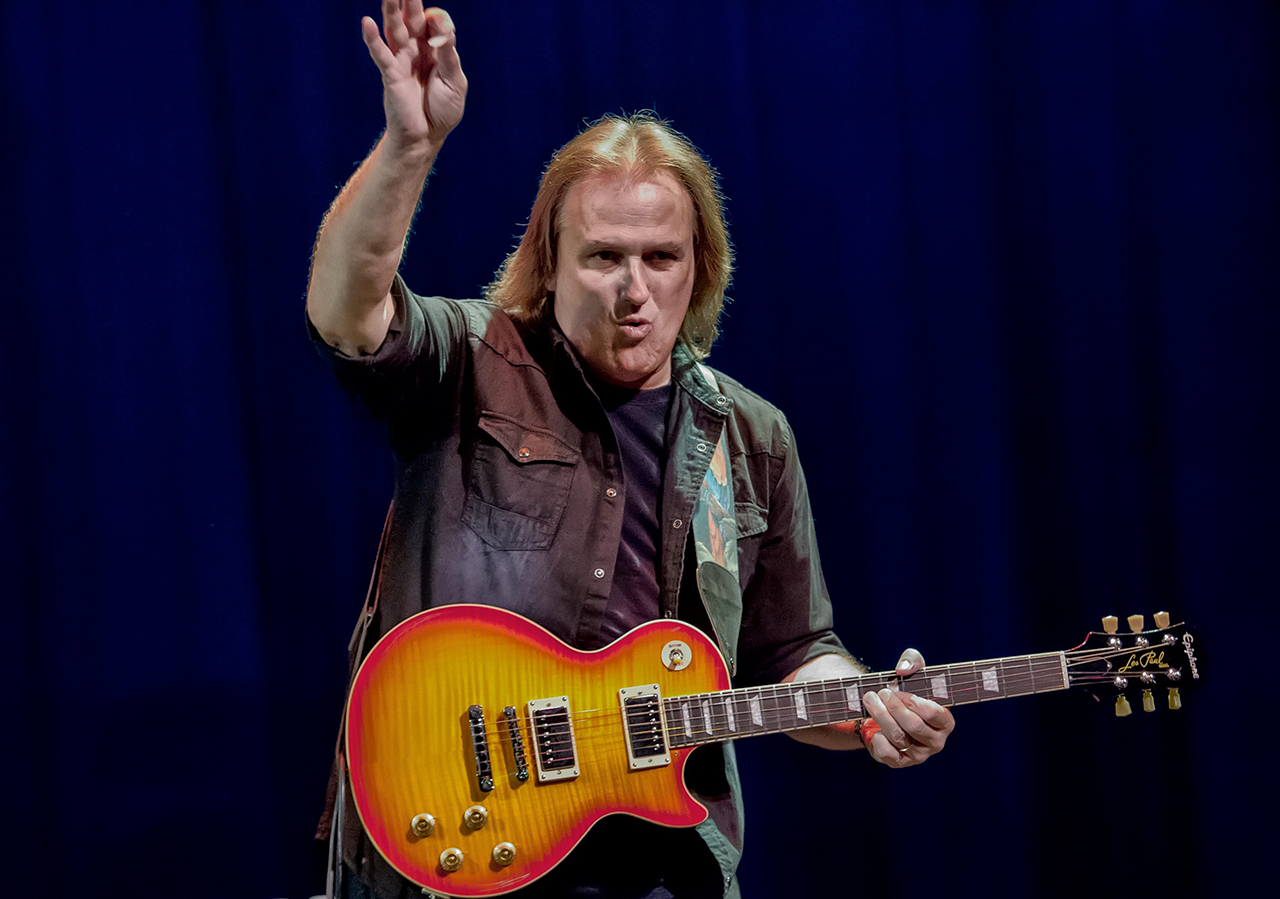
“Hendrix was always a favorite of mine, and I developed a catalog of his covers when I was young, so recording it for that album was easy. I just reached into my bag and played like I did Villanova Junction on my Shakin’ the Dust album. I don’t overthink it – I just let it flow.”
How did you get the gig with John Mayall in 2009?
“It was a simple call out of the blue from John asking me to join him. There were no middlemen, handlers or auditions. I wasn’t even looking for a gig; I actually thought it was a prank call by one of my best buddies. The first few minutes were awkward – I didn’t believe it was John and I almost hung up on him!
Even if you knew the song, John changed the keys constantly. You have to have complete mastery of your instrument to just go with the flow
“Ultimately, he convinced me it was really him and said he remembered seeing me play years before. He’d heard my album, Miracle, on the radio in the UK and liked what he heard, so he bought it and eventually called me.”
Was it challenging covering licks by Eric Clapton, Peter Green and Mick Taylor?
“The most challenging thing was John’s massive back catalog. There was no way to prepare all the material – John thrived on improv and never repeated the same set twice in all the years I was with him. The band wouldn’t know what we were going to play until about half an hour before the show, when John wrote the setlist.
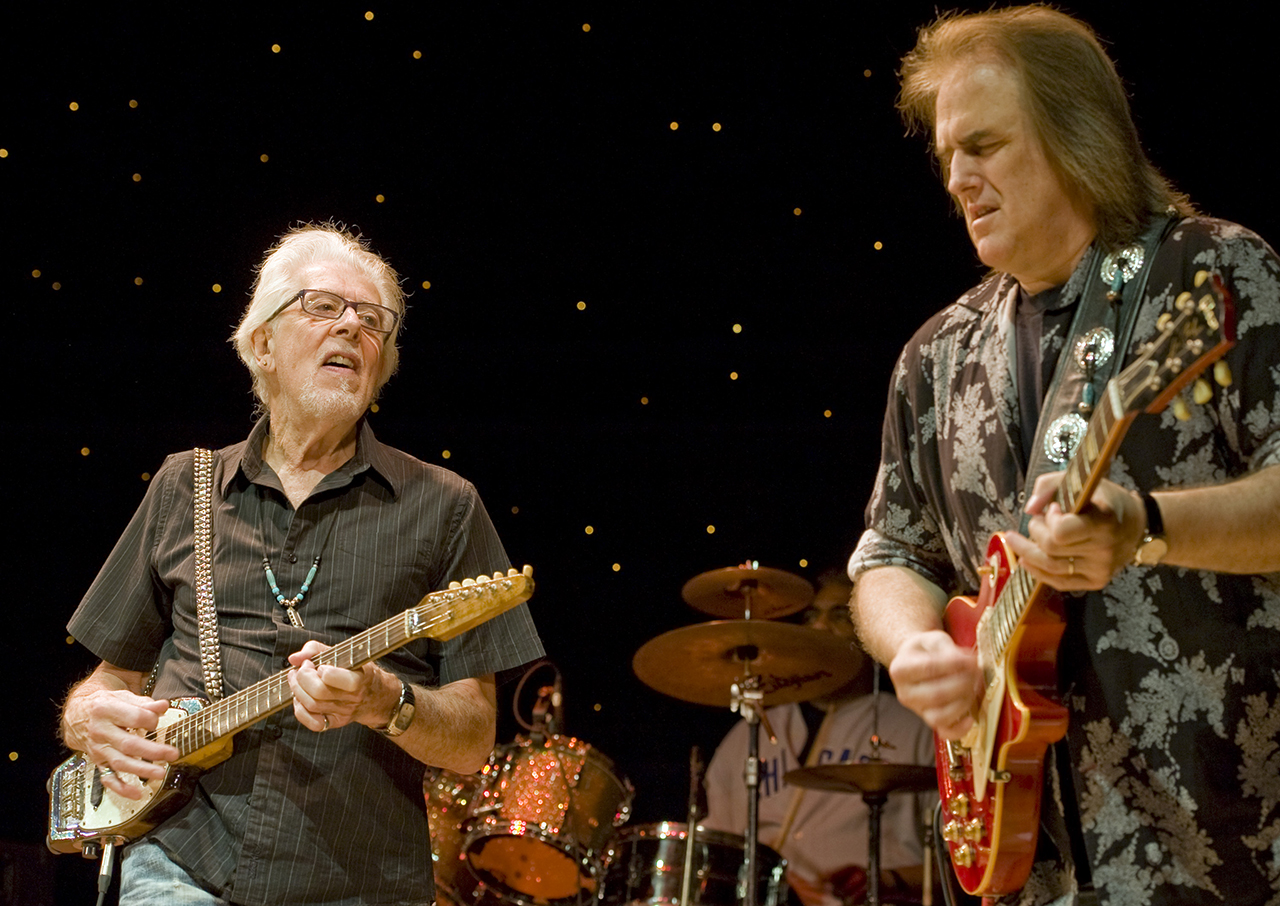
“Even if you knew the song, John changed the keys constantly. Every set list had a song, and next to the title was the key he wanted to play that night. You have to have complete mastery of your instrument to be able to just go with the flow and watch John for any changes.
“It was challenging at first, but it made me a better player by forcing me out of my comfort zone and into keys that are not necessarily guitar-friendly for lead work. John was extremely generous; I got to stretch lead breaks into infinity, expanding into possibilities I’d never tried before. He encouraged experimentation.”
I’d love to do another European tour… Maybe I’ll go back on the road with a big band as their lead guitarist
What’s the most important lesson you’ve learned?
“I picture my life as a three-act play. The first act is about discovery, development, and the discipline of finding my way. The second act is about living with what I chose to create and being productive. I expected to start slowing down by the third act, but I was wrong!
“Covid gave me time to reflect, recharge, and embrace whatever’s next. I’ve learned so many new things in the last decade – especially when it comes to technology and what it can do for an artist’s career.
“I never envisioned having an online presence where my music would be available to a worldwide audience, having a band that included the next generation of our family with my son on bass, or having a family business that involved my wife and my daughter! That’s the lesson: never stop learning.”
So what’s next?
“I’m open to anything and everything. I’d love to do another European tour on a double bill with another good blues-rock band and have fun. Maybe I’ll go back on the road with a big band as their lead guitarist. I’d love to produce someone else’s album or collaborate with someone new.
“I’d also love to do one of those rock and blues cruises to jam with some of my old friends. I especially love answering guitar questions through social media. Maybe I’ll do all these things!
“The only thing I’m sure about is that it will be interesting. That's the beauty of being an artist: I get to create whatever makes me happy.”
- Livin’ My Best Life is on sale now.







